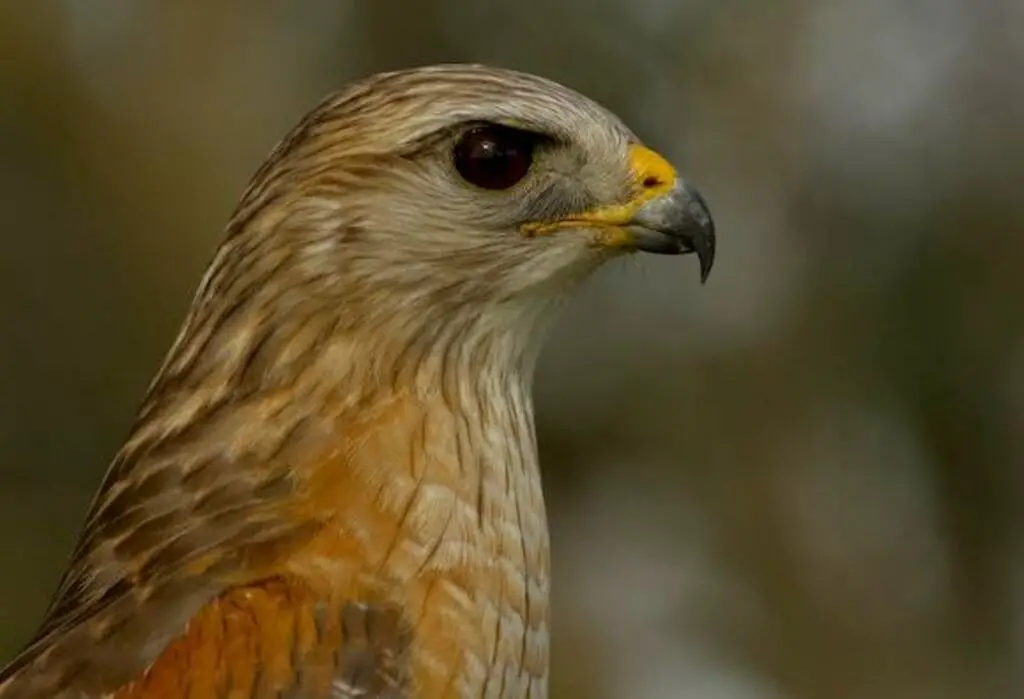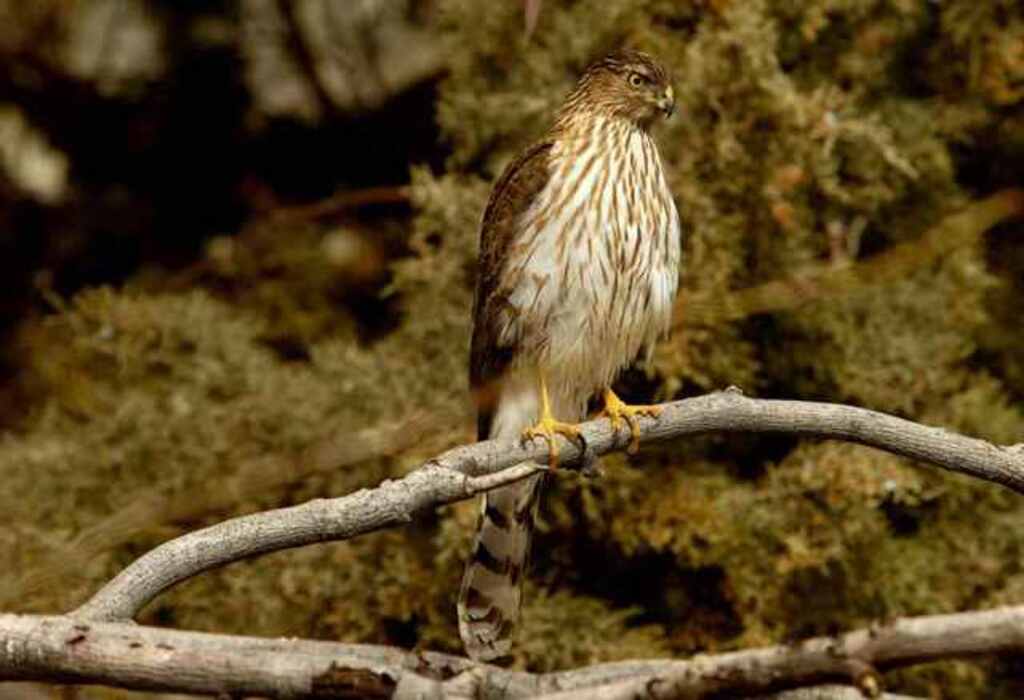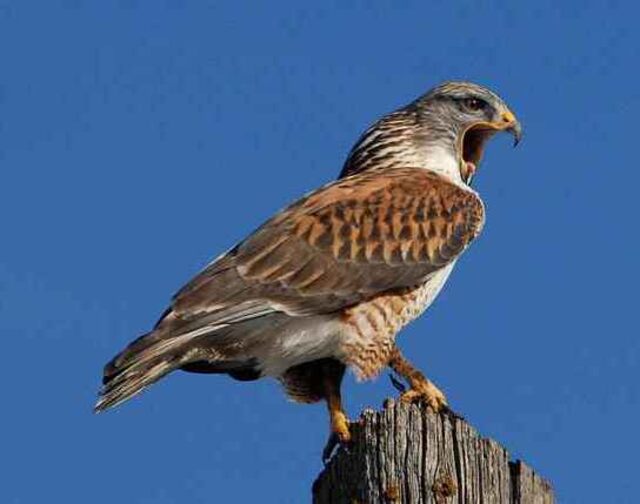Hold on to your feathers, folks! We’re about to swoop into the realm of avian myths and soar through the skies of truth. Today, we tackle the burning question: Do hawks carry rabies? The short answer: No need to panic!
While rabies is a viral disease that affects mammals, including humans, the idea of hawks as carriers may ruffle some feathers.
Join us as we explore the fascinating world of hawks, their hunting prowess, and debunk the myths surrounding their potential involvement in transmitting rabies.
Get ready to spread your wings and discover the surprising reality behind these captivating creatures, while learning how to stay safe when encountering these impressive birds of prey.
Table of Contents
- 1 Key Takeaways
- 2 Understanding Rabies and Its Transmission
- 3 Common Myths about Hawks and Rabies
- 4 The Truth about Hawks and Rabies
- 5 Preventing Contact with Hawks
- 6 What to Do If You Come into Contact with a Hawk
- 7 Understanding the Importance of Hawks in the Ecosystem
- 8 Conservation Efforts for Hawks
- 9 Summary of Key Points
- 10 Additional Resources for More Information
- 11 Frequently Asked Questions
- 12 Conclusion
- 13 Author
Key Takeaways
- It is rare for hawks to contract and transmit the rabies virus to humans, but red-tailed and Cooper’s hawks are more likely to carry the virus.
- Symptoms of hawk rabies include lethargy, disorientation, and aggression.
- Wildlife education and precautions are essential for understanding risks and protecting habitat, including wearing protective clothing when handling hawks and avoiding feeding or touching them.
- Conservation efforts are important for preserving hawk habitat and their ecological role as predators of rodents and pests, which helps control the spread of diseases. Vaccination of domestic animals and reporting of sick/injured hawks are also important for preventing the spread of rabies.
Understanding Rabies and Its Transmission
The understanding of rabies and its transmission is crucial in determining the likelihood of hawks carrying the virus.
Rabies is a viral infection that affects the nervous system of mammals, including humans, and is typically transmitted through the bite of an infected animal.
Symptoms of rabies in humans include fever, headache, muscle weakness, and paralysis, eventually leading to death if left untreated.
Treatment for rabies involves a series of vaccinations, which are most effective when administered immediately after exposure.
It is also important to note that vaccination for pets and wildlife, such as bats and raccoons, is crucial in preventing the spread of rabies.
While hawks can carry rabies, it is rare for them to contract the virus and even rarer for them to transmit it to humans. In the next section, we will explore common myths about hawks and rabies.
Common Myths about Hawks and Rabies
There are common myths surrounding hawks and their potential to carry and transmit rabies to humans.
One of these myths is that all birds of prey carry rabies, which is not entirely accurate.
Certain hawk species, however, are more likely to carry the virus than others.
Despite this, hawks are not typically harmful to humans, as they are not aggressive towards people and do not actively seek out human interaction.
All Birds of Prey Carry Rabies
Birds of prey, including hawks, are known carriers of the rabies virus. While it is true that not all birds of prey carry rabies, they are still considered potential carriers.
The transmission of rabies from birds to humans is relatively rare, but it is still important to be cautious when handling or coming into contact with any wild animal.
The rabies virus is typically transmitted through the saliva of an infected animal, which can enter the body through a bite or scratch.
It is important to note that certain hawk species are more likely to carry rabies than others, and it is important to be aware of the signs of rabies in any wild animal.
As with any wild animal, it is important to take precautions and avoid contact with them whenever possible to prevent the spread of disease.
Certain Hawk Species are More Likely to Carry Rabies
Among bird species, it is crucial to identify which specific types of hawks are more susceptible to carrying the rabies virus.
While all birds of prey have the potential to carry and transmit rabies, certain hawk species are more likely to contract the virus due to their feeding habits and environment.
For instance, red-tailed hawks and Cooper’s hawks have been found to be more susceptible to rabies due to their tendency to prey on small mammals, which are common carriers of the virus.
Additionally, hawks that live in urban areas where contact with domestic animals is more frequent also have a higher risk of contracting rabies.
Symptoms of hawk rabies include lethargy, disorientation, and aggression.
It is important to educate the public on the potential danger of hawks carrying rabies and to take necessary precautions when encountering wild birds.
With this in mind, it is also important to note that not all hawks are harmful to humans and that they play a crucial role in our ecosystem as predators of rodents and other pests.
Hawks are Harmful to Humans
Hawks are territorial birds that will defend their nests and hunting grounds from perceived threats. Therefore, approaching a hawk’s nest or disturbing its hunting area can result in an attack.
It is also important to note that hawks have sharp talons and beaks that can cause serious injury.
However, it is important to remember that hawk attacks on humans are rare, and in most cases, can be prevented by keeping a safe distance from these birds.
It is also important to note that while hawks may carry diseases, such as West Nile virus, they are not known carriers of rabies.
Understanding the behavior and biology of hawks can help prevent harm to both humans and these magnificent birds.

The Truth about Hawks and Rabies
This section will discuss the truth about hawks and their potential to carry rabies, as well as other diseases they may carry.
While it is a common myth that hawks are carriers of rabies, the reality is that they are not significant vectors for the disease.
However, hawks can carry other diseases such as West Nile Virus and avian influenza, which can pose risks to human health.
It is important to understand the risks associated with handling hawks and take appropriate precautions to avoid potential exposure to these diseases.
Do Hawks Carry Rabies?
Hawks are not known to be carriers of the rabies virus, which is good news for those concerned about public safety.
Despite their sharp talons and beaks, hawks are not a threat to humans in terms of carrying diseases like rabies.
In fact, hawks play an important role in our ecosystem and are protected under conservation efforts.
To further emphasize the point, a table is presented below that compares the diseases carried by hawks and other common animals.
While hawks may not carry rabies, it is important to note that they can carry other diseases such as avian influenza, West Nile virus, and salmonella.
Therefore, it is still important to exercise caution around wild animals and take necessary precautions for personal safety.
| Animal | Rabies | Avian Influenza | West Nile Virus | Salmonella |
|---|---|---|---|---|
| Hawks | No | Yes | Yes | Yes |
| Raccoons | Yes | No | No | Yes |
| Skunks | Yes | No | No | Yes |
| Bats | Yes | Yes | Yes | Yes |
Other Diseases Hawks Can Carry
Wild animals like hawks can harbor a variety of avian diseases and zoonotic infections, making it important to take necessary precautions when interacting with them.
Some of the diseases that hawks can carry include avian influenza, West Nile virus, and salmonella.
Avian influenza, commonly known as bird flu, is a highly contagious viral disease that can spread quickly among birds and sometimes to humans.
West Nile virus is a mosquito-borne disease that can cause severe illness in humans, while salmonella is a bacterial infection that can cause food poisoning.
Other diseases that hawks can carry include aspergillosis, which is a fungal infection that can affect the respiratory system, and histoplasmosis, which is a fungal infection that can cause lung problems.
Given the risks associated with handling hawks, it is important to take necessary precautions, including wearing protective gear and seeking medical attention if symptoms of infection arise.
Risks Associated with Handling Hawks
When handling hawks, individuals must be aware of the potential risks involved to ensure their safety and prevent the spread of diseases.
Proper precautions and handling techniques for hawks must be followed to minimize the risks of physical injury or transmission of diseases.
It is essential to wear protective clothing such as gloves and eye protection when handling hawks, as they can be aggressive and have sharp talons and beaks.
Additionally, it is crucial to wash hands thoroughly after handling hawks to prevent the spread of diseases.
Wildlife education is also essential to ensure individuals understand the risks of handling hawks and the importance of protecting their natural habitat.
With proper handling techniques and education, individuals can safely interact with hawks without putting themselves or the birds at risk.
As such, preventing contact with hawks is not only necessary for personal safety but also for the conservation of these magnificent creatures.
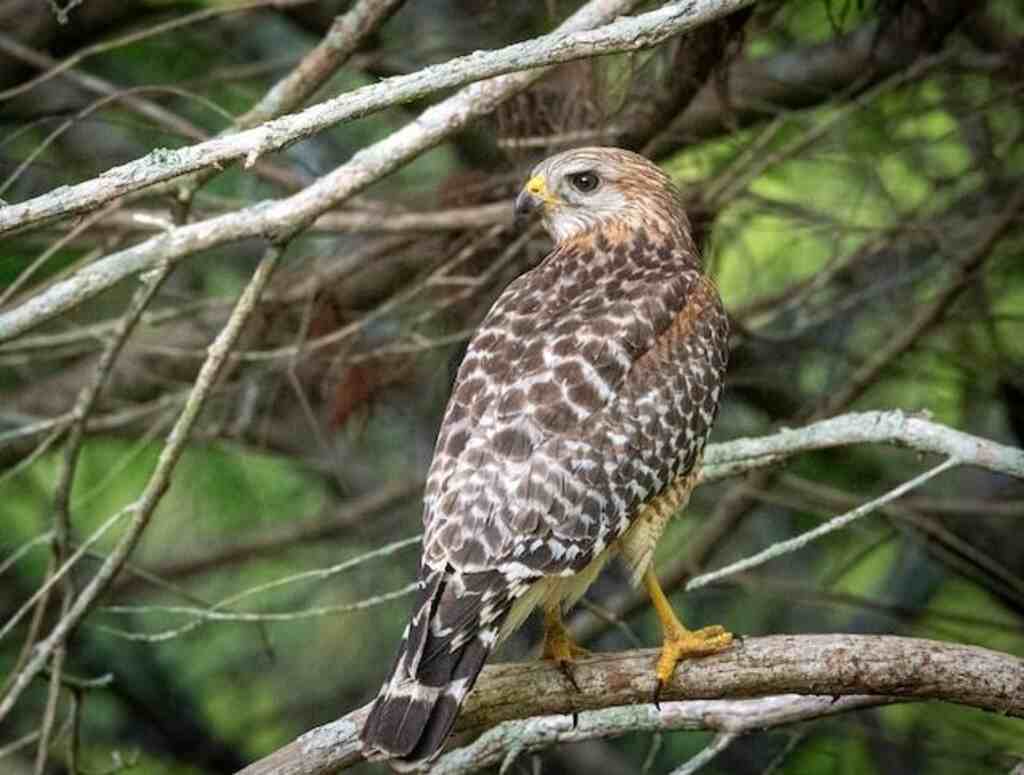
Preventing Contact with Hawks
To avoid potential exposure to rabies, it is important to take preventative measures when interacting with birds of prey, including hawks. Here are four ways to prevent contact with hawks:
1) Avoiding areas where hawks are known to inhabit, such as open fields and wooded areas;
2) Using binoculars or a spotting scope to observe hawks from a safe distance;
3) Avoiding feeding or attempting to touch hawks, as they are wild animals and may become aggressive when feeling threatened;
4) Wearing protective clothing, such as gloves and long sleeves, when handling hawks for research or rehabilitation purposes.
By following these guidelines, individuals can minimize the risk of coming into contact with hawks and potentially contracting rabies or other diseases. If contact does occur, however, it is important to take immediate action to seek medical attention and report the incident to local authorities.
What to Do If You Come into Contact with a Hawk
In the event of contact with a hawk, it is important to take prompt action to minimize the risk of disease transmission and ensure personal safety.
Precautionary measures include washing any open wounds with soap and water, and seeking medical attention immediately if the hawk has bitten or scratched you.
Additionally, it is important to report any incidents of contact with hawks to your local animal control or health department.
This will not only help track the spread of diseases such as rabies, but also aid in understanding the behavior of hawks and their interactions with humans.
Understanding the importance of hawks in the ecosystem can also lead to better coexistence and appreciation for these magnificent birds of prey.
Understanding the Importance of Hawks in the Ecosystem
Understanding the crucial role that hawks play in maintaining the balance of the ecosystem is essential for appreciating their significance beyond their potential risks to human health.
Here are four reasons why hawks are important for the ecosystem:
(1) They help control rodent populations, which can cause damage to crops and spread diseases;
(2) They are apex predators, meaning they help regulate the populations of other species in the food chain;
(3) They contribute to nutrient cycling by consuming dead animals; and
(4) They serve as indicators of environmental health, as their presence or absence can signal changes in the ecosystem.
Hawk conservation and their ecological role are important considerations for maintaining a healthy environment. As such, conservation efforts for hawks must be implemented to ensure their continued presence in natural habitats.
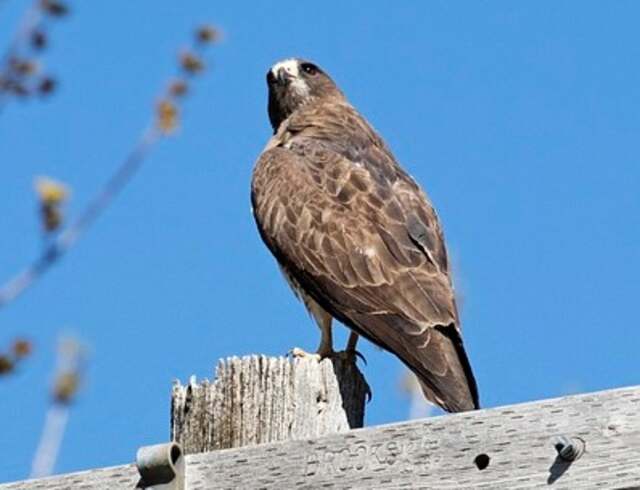
Conservation Efforts for Hawks
Conservation efforts aimed at preserving the habitat of hawks are crucial for maintaining ecological balance in their respective ecosystems.
With the increasing human population and urbanization, the natural habitats of hawks are being destroyed, leading to a decline in their population growth.
Conservation efforts have been put in place to protect their habitats, including the creation of protected areas, habitat restoration, and education programs to promote awareness about the importance of hawks in the ecosystem.
Hawk habitat conservation is essential as they play a crucial role in controlling the population of rodents, which are known to carry diseases harmful to humans.
By conserving their habitats, we ensure that hawks continue to thrive and contribute to the balance of the ecosystem.
In the next section, we will summarize the key points discussed in this article.
Summary of Key Points
Preserving the natural habitats of hawks is necessary to maintain the ecological balance and control the population of rodents carrying harmful diseases.
Hawks are important predators that play a crucial role in regulating the populations of small mammals and birds. They are known for their sharp talons and keen eyesight, which enable them to hunt efficiently.
In terms of behavior, hawks are solitary animals that prefer to hunt alone and avoid confrontation with other birds.
To prevent the spread of rabies, it is important to vaccinate domestic animals and avoid contact with wild animals, including hawks.
In addition, it is important to report any sightings of sick or injured hawks to local wildlife authorities.
By preserving their natural habitats and taking preventive measures, we can ensure the safety of both humans and wildlife.
For those interested in learning more about hawk behavior and rabies prevention, there are various resources available, such as wildlife rehabilitation centers and online wildlife organizations.

Additional Resources for More Information
For those seeking to expand their knowledge on the topic of hawks and their habitats, a variety of resources exist, including wildlife rehabilitation centers and online wildlife organizations.
Finding reliable sources is crucial when researching information on hawks and their behavior.
Expert opinions from wildlife biologists and ornithologists can provide valuable insights into the behavior and habits of hawks.
Wildlife organizations such as the National Audubon Society and the World Wildlife Fund offer information on the conservation efforts for various hawk species.
Additionally, state wildlife agencies can provide information on local hawk populations and regulations for interacting with them.
It is important to gather information from a variety of sources to gain a well-rounded understanding of hawks and their role in the ecosystem.
Frequently Asked Questions
What are the different types of hawks that can carry rabies?
The geographic distribution of rabid hawks varies, with several different types of hawks known to carry the disease. These include the red-tailed hawk, Cooper’s hawk, and sharp-shinned hawk. It is important to exercise caution when encountering any hawk, as they may carry rabies.
Can domestic animals contract rabies from hawks?
Rabies transmission from hawks to domestic pets is rare, but possible. Preventative measures, such as keeping pets on a leash and avoiding contact with sick or dead animals, can reduce the risk of transmission during hawk encounters.
What are the symptoms of rabies in hawks?
Rabies symptoms in hawks include aggression, paralysis, and altered behavior. Prevention methods include vaccination and avoiding contact with wild animals. Stay informed on the latest research to protect yourself and your community.
Are there any current outbreaks of rabies in hawk populations?
There are currently no known outbreaks of rabies in hawk populations. However, hawk rabies transmission can occur through bites or scratches from infected animals. Prevention methods include vaccination of domestic pets and avoiding contact with wild animals.
Can humans contract rabies from a hawk’s feathers or droppings?
Rabies transmission through hawk feathers or droppings is unlikely as the virus is fragile and cannot survive outside a host for long. However, caution should be exercised in handling or disturbing hawk habitat as infected animals may shed the virus.
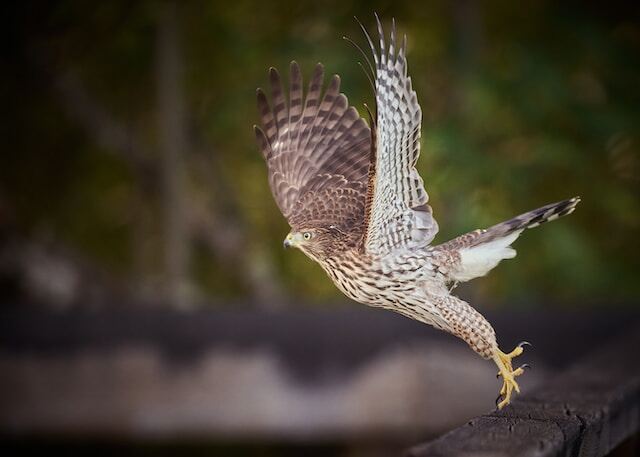
Conclusion
Rabies is a serious viral disease that affects the central nervous system of mammals. The virus is transmitted through the saliva of infected animals, usually through bites or scratches.
While many animals can carry rabies, there are common misconceptions about whether hawks can transmit the virus. However, there is no evidence to suggest that hawks carry or transmit rabies.
It is important to understand the facts about hawks and rabies to avoid unnecessary fear or harm to these important birds.
If you encounter a hawk, it is essential to prevent contact and treat it with respect. If you do come into contact with a hawk, seek medical attention immediately and report the incident to local authorities.
As the adage goes, ‘knowledge is power’. By understanding the truth about hawks and their role in the ecosystem, we can better appreciate and protect these majestic birds.
Conservation efforts for hawks are critical to maintaining healthy ecosystems and preserving biodiversity.
With continued research and education, we can work towards a future where humans and wildlife can coexist in harmony.

